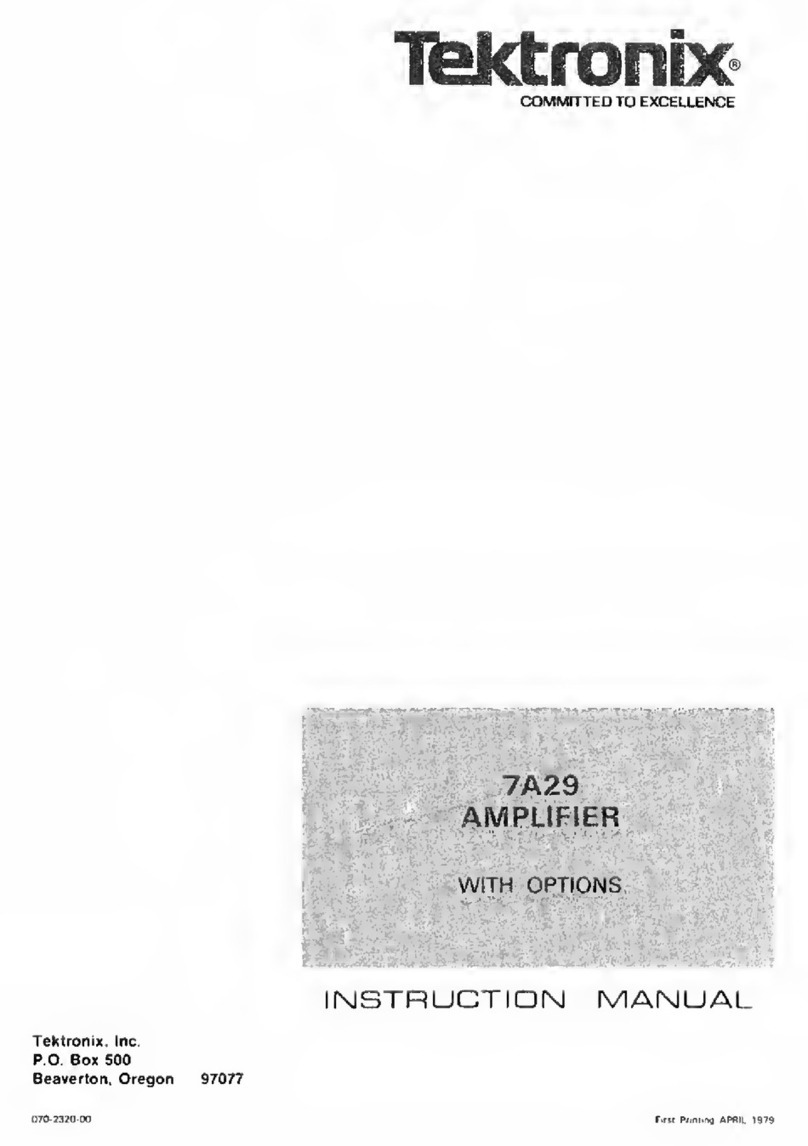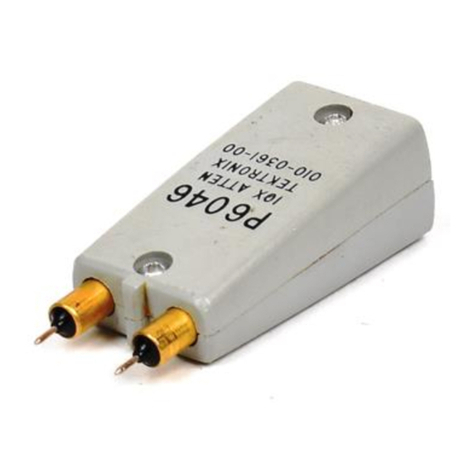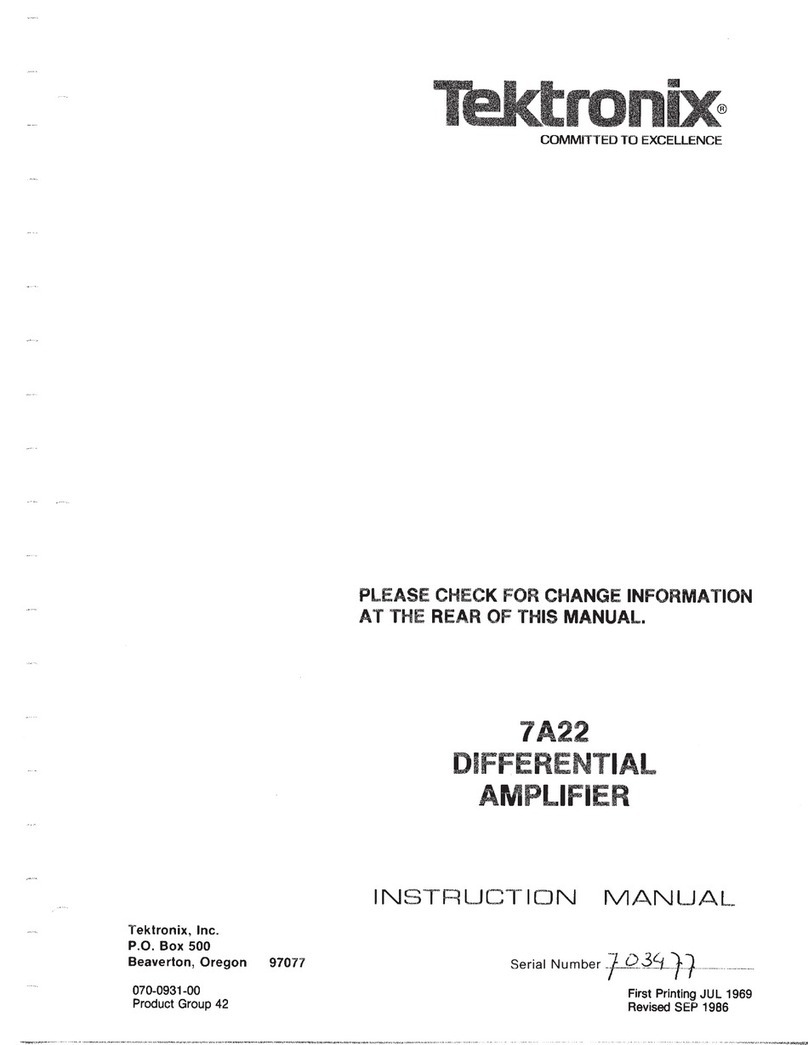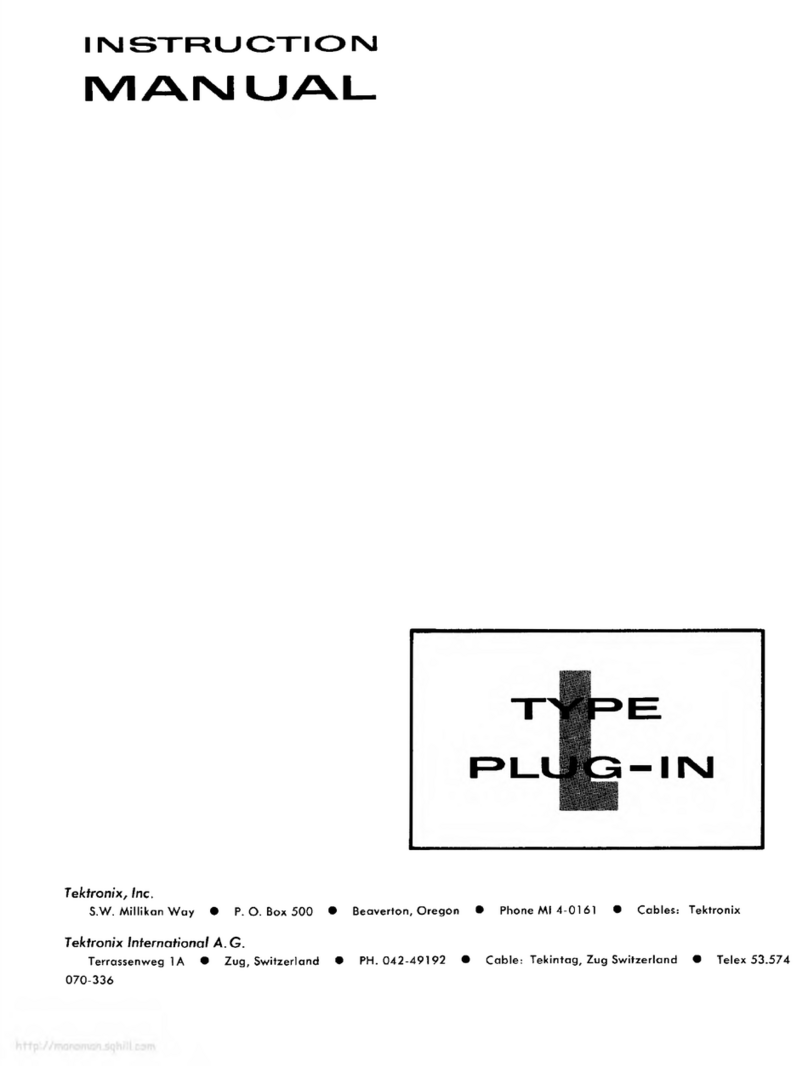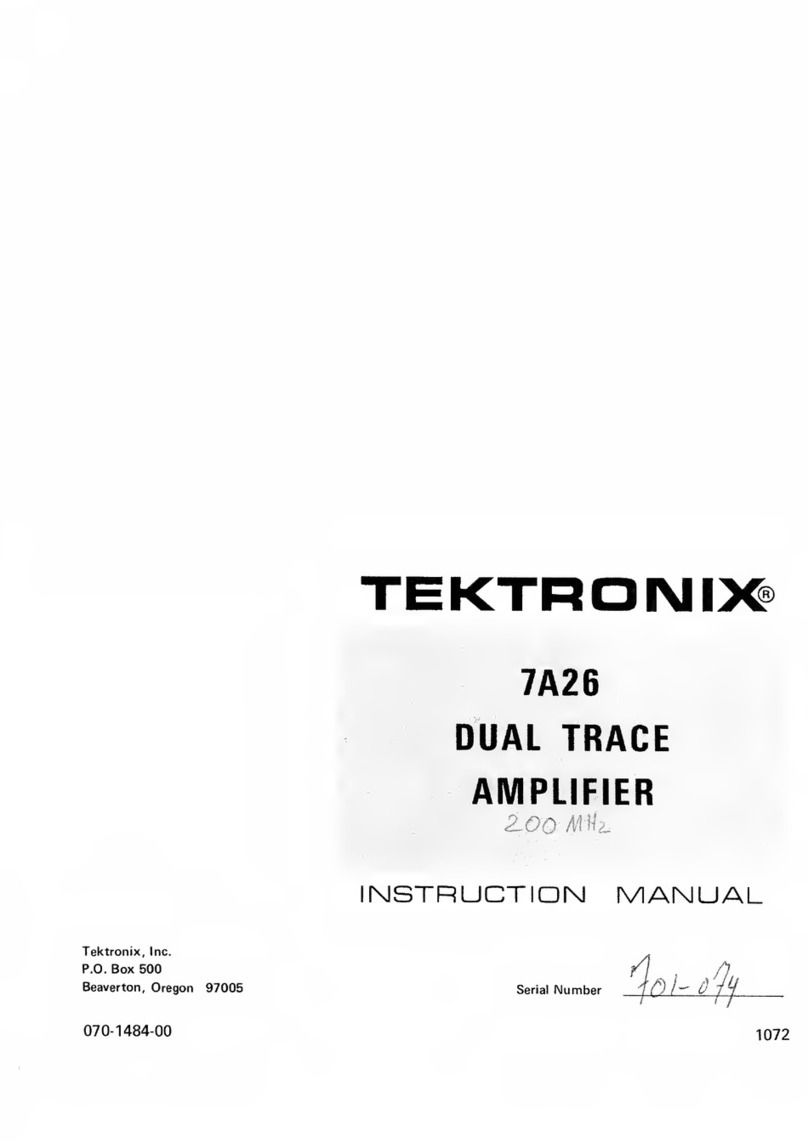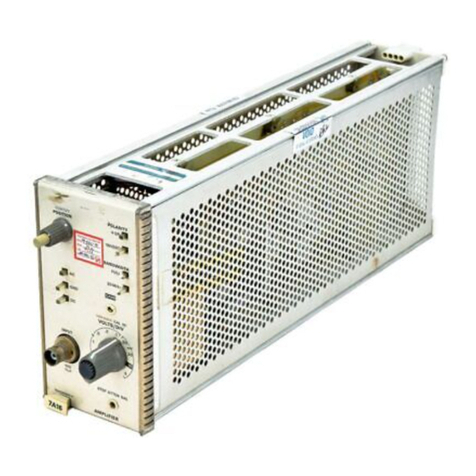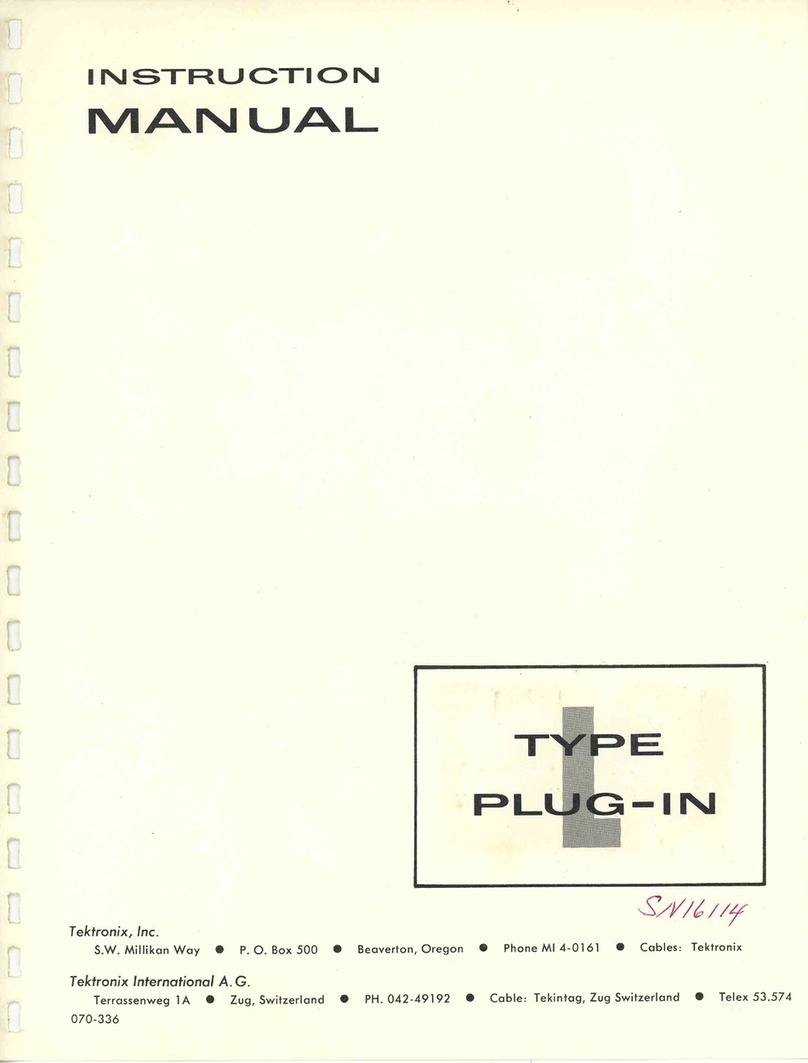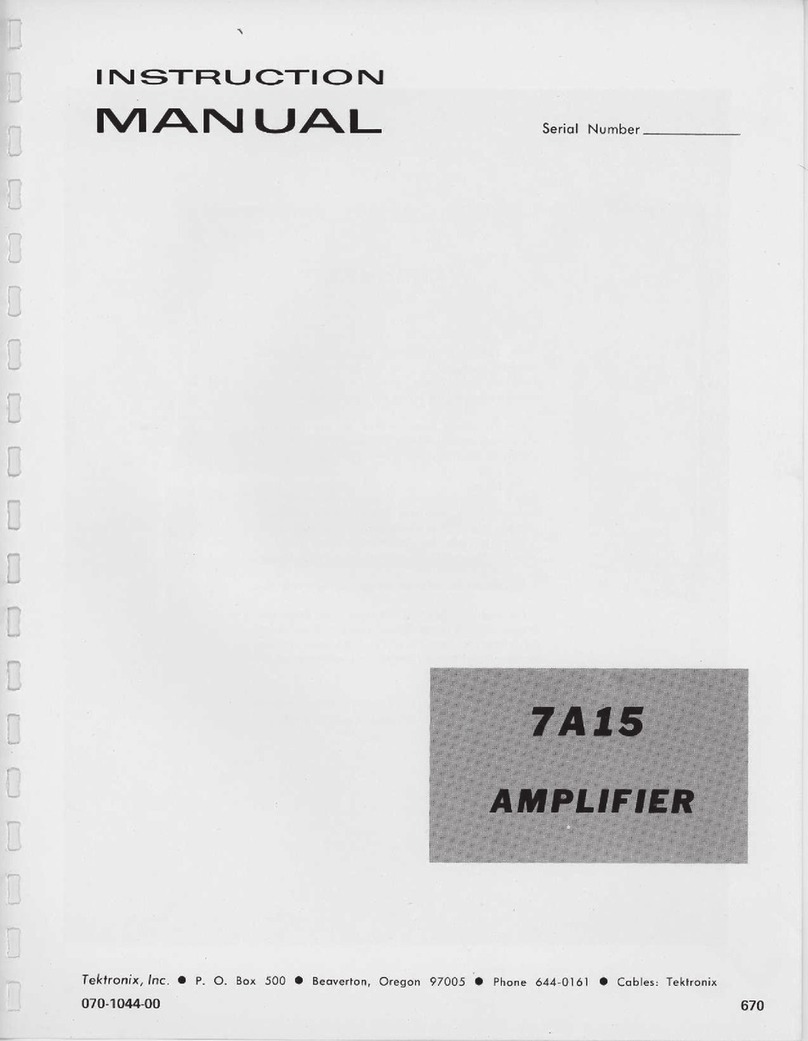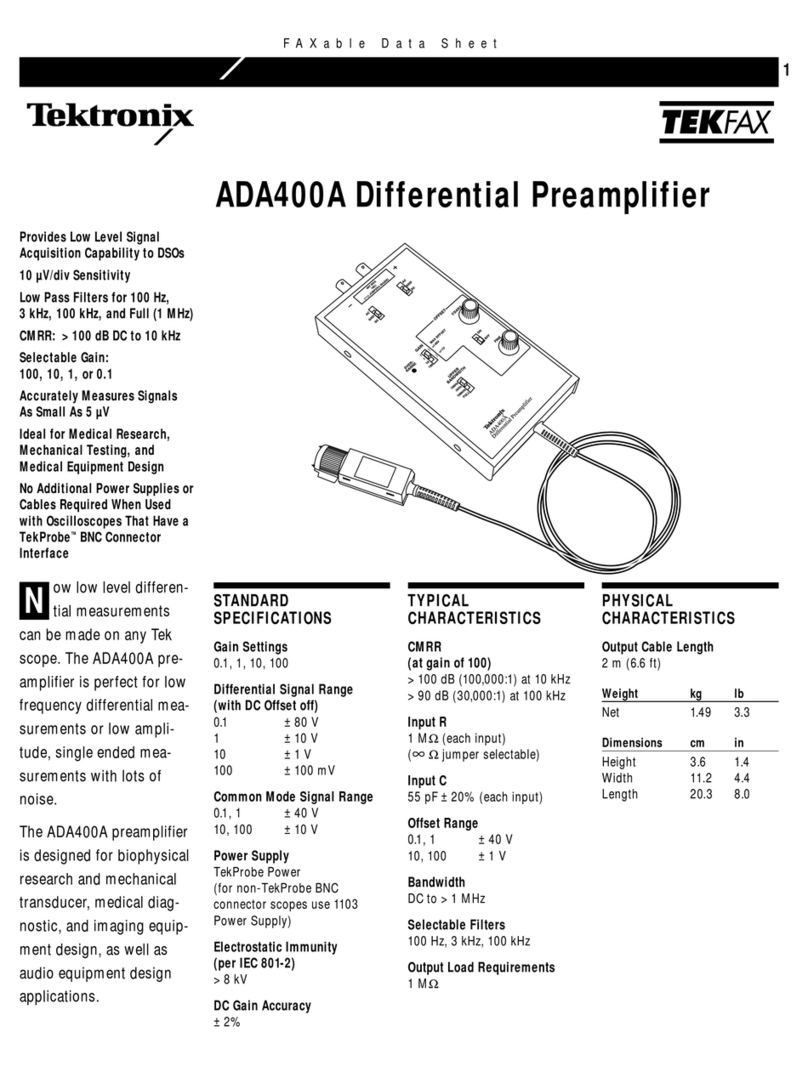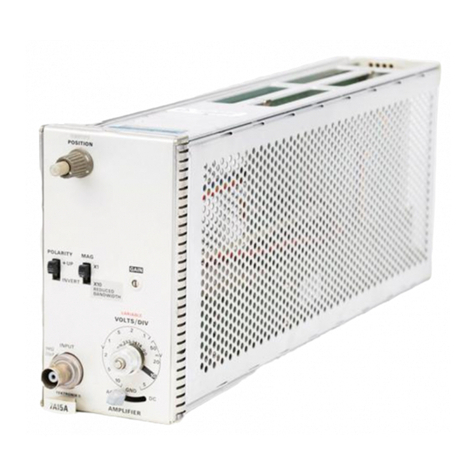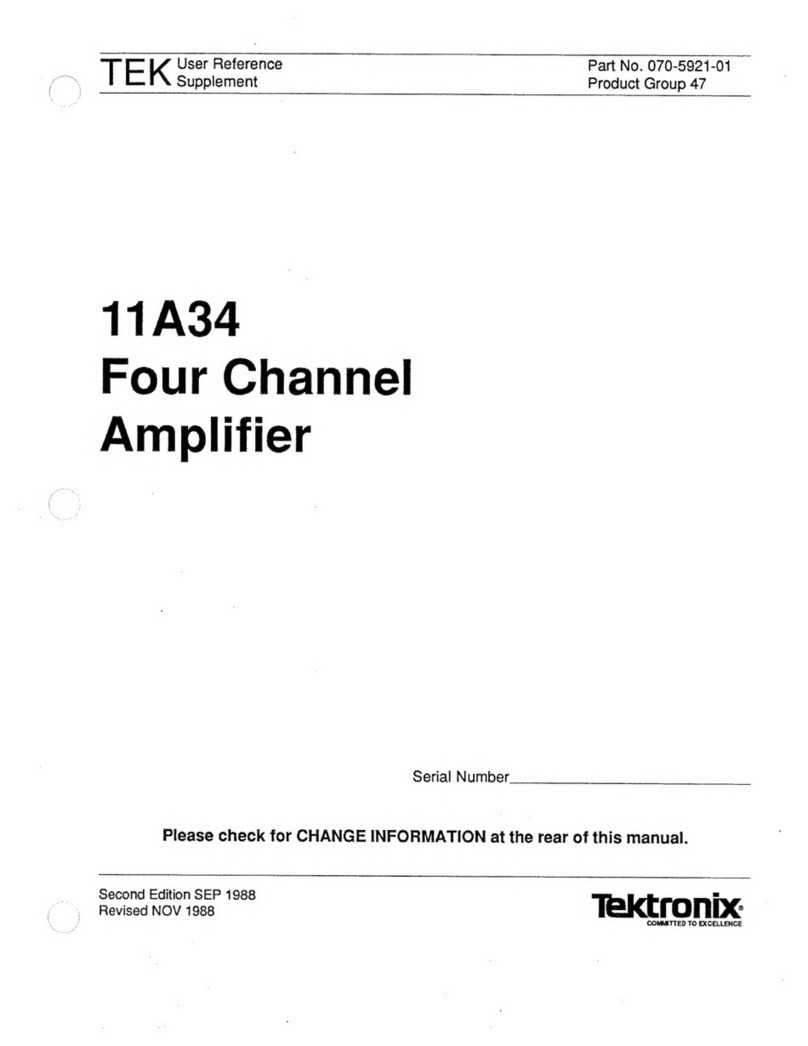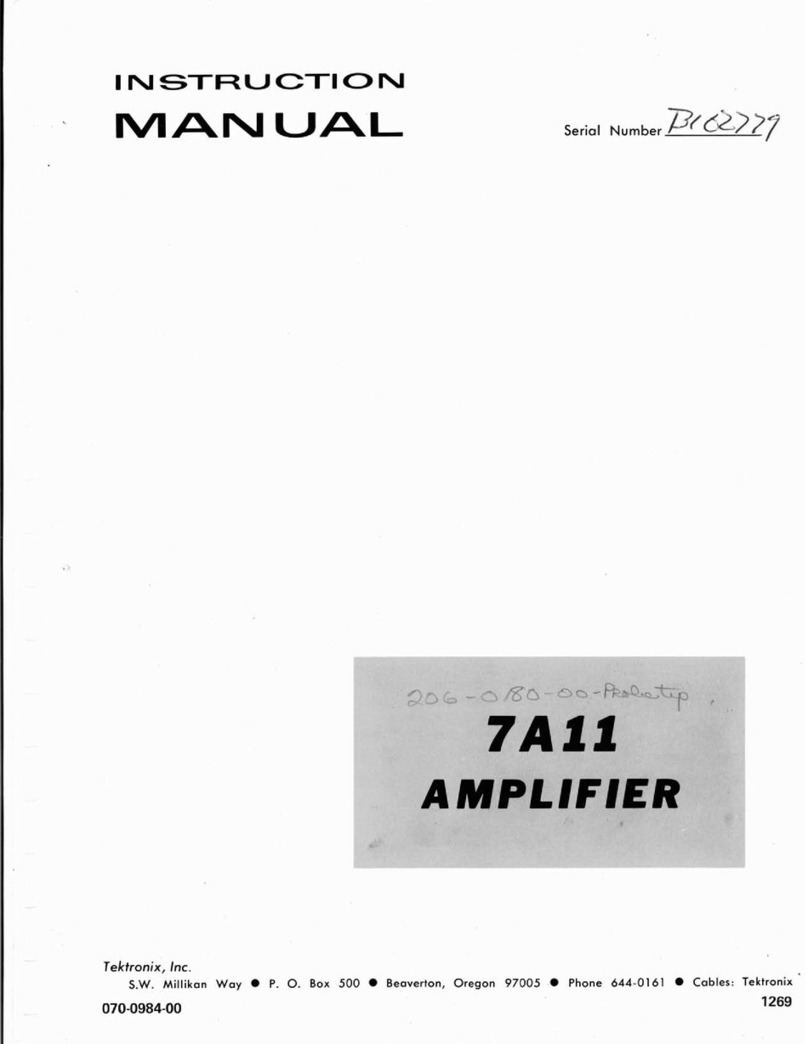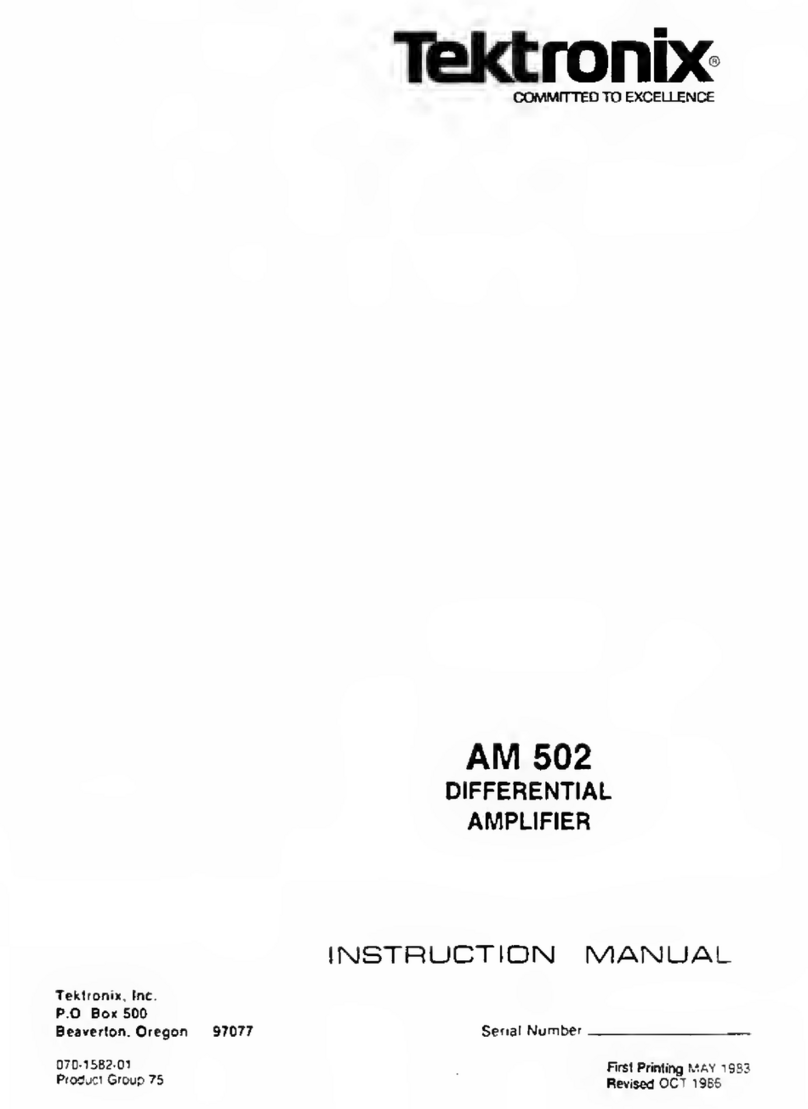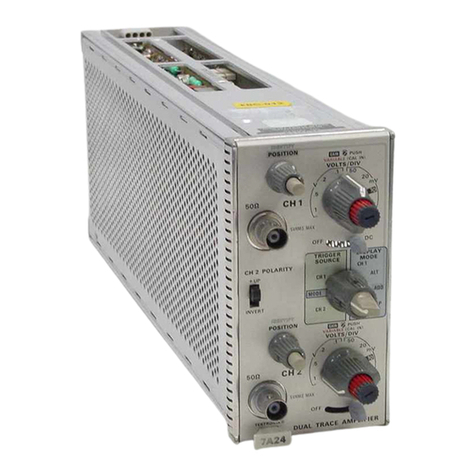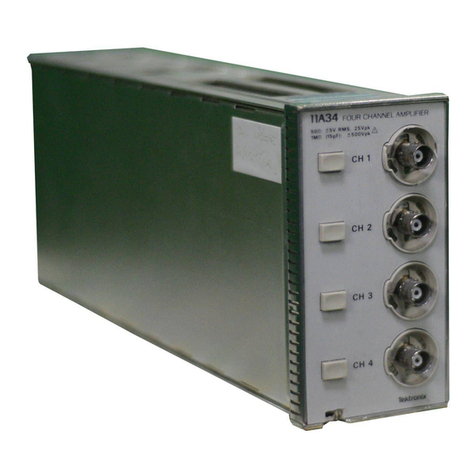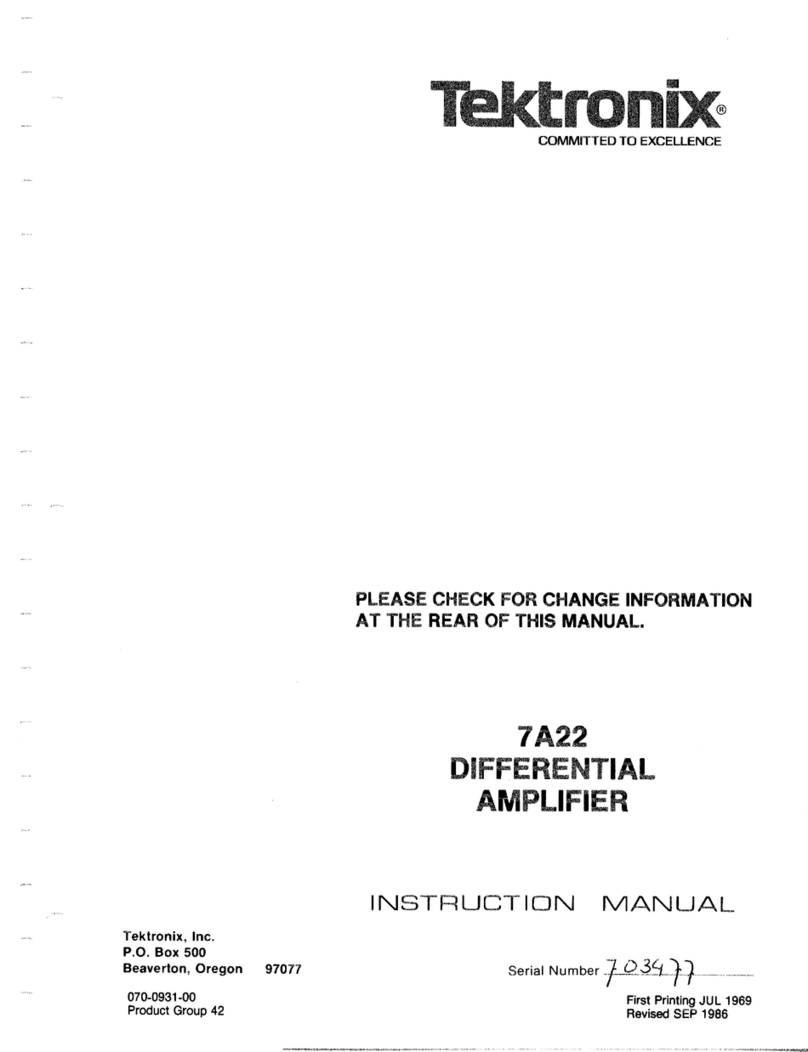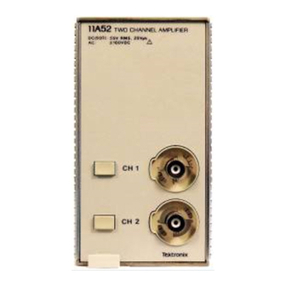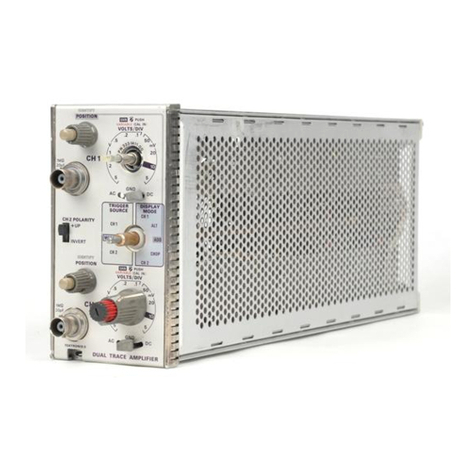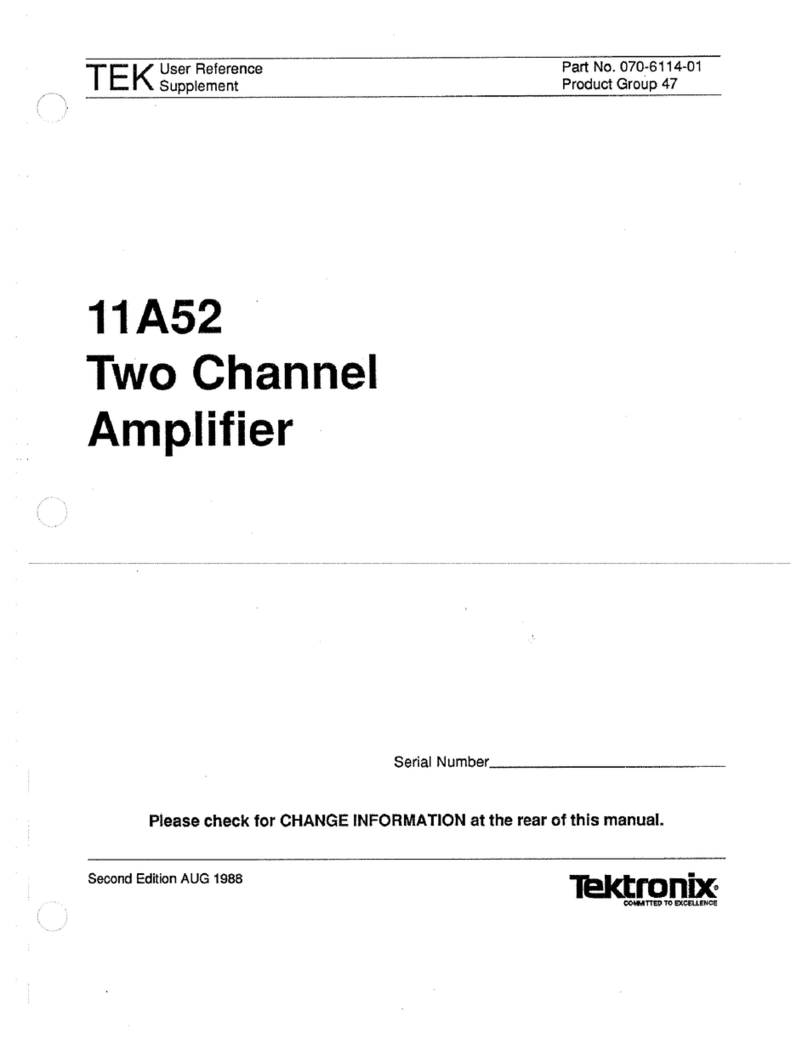Type 7A22
SECTION 2
OPERATING INSTRUCTIONS
Change information, if any, affecting this section will be found at the
rear of the manual.
Introduction
This section opens with obrief functional description of
the front-panel controls, input overdrive lamp, and input
connectors. Following the front-panel description is afamiliar-
ization procedure and finolly ageneral discussion of the
operation of the Type 7A22.
CONTROLS AND CONNECTORS
INPUT
OVERDRIVE
VOLTS/DIV
VARIABLE
(CAL IN)
GAIN
POSITION
IDENTIFY
HIGH
FREQUENCY
-3dB POINT
Input overdrive indicator lamp turns on
to indicote excessive differential drive
to the input amplifier stage. Lights when
the differential dynamic ronge between
input connectors is exceeded.
Volts per displayed division. Nineteen
position switch used to select the cali-
brated deflection foctors.
Two-position switch activated by the
VARIABLE krtob to select calibrated or
uncalibrated deflection factors. At the
IN position, the VARIABLE control is in-
operotive ond the deflection factor is
calibrated. When pressed ond releosed,
the knob moves outward to activate the
VARIABLE control lor uncolibroted de-
flection factors. The uncalibrated posi-
tion provides continuously variable un-
calibroied attenuation between the cali-
brated deflection factors and extends
the deflection factor to ot least 25
VOLTS/DIV.
Screwdriver odiust control to set the CRT
display scale factor to agree with the
VOLTS/DIV switch irKficolion. Adjusted
for proper deflection with the VOLTS/ *
OlV switch set to the 1mV position.
The control that vertically positions the
trace or display.
Momentary contact, push-button switch,
concentric with POSITION. Will cause
the Iroce, representing the output of the
Type 7A22, to move asmall amount
when pressed. Aids in identifying the
Type 7A22 trace when multiple traces
ore disployed.
Nine position switch to select the op-
proximote high frequency 3dB point.
The switch positions are; 100 Hz, 3()0 Hz,
IkHz, 3kHz, lOkHz, 30kHz, 100kHz,
300 kHz, and 1MHz.
LOW
FREQUENCY
3dB POINT
+INPUT
-input
Eight position switch to select DC coupl-
ing or the approximate low frequency
-3dB points. The switch positions ore;
DC OFFSET. DC, ,1Hz, IHz, 10 Hz,
too Hz, IkHz, ond 10 kHz.
Signal input connector. Positive input
produces deflection upword (see Fig.
M).
Signol input connector. Positive input
produces deflection downward [see Fig.
2-n.
Fig. 2-1. Signali appliad >0 lh« 4-INPUT connaclor praduMt an
uprtghi dltplay. whll« tignah appliad la ItM -INPUT ait Invtrtad.
tAC-GND-DC Aminiature illuminated push-button type
switch. The buttons ore interlocked so
thol only one button may be depressed
at one time. When the 'AC button is
depressed the signol is coupled through
0.1 /<F to the Input Amplifier and only
the varying component of the input sig-
nol is omplified.
When the DC button is depressed the
signal is coupled directly to the Input
Amplifier and the entire input signal,
both AC ond DC, is omplified. When
the GND' button (or none of the but-
tons) is depressed, the signol is coupled
through 0.1 /<F ond through 1Mil to
ground. The Amplifier Input is grounded
in this condition.
2-1

